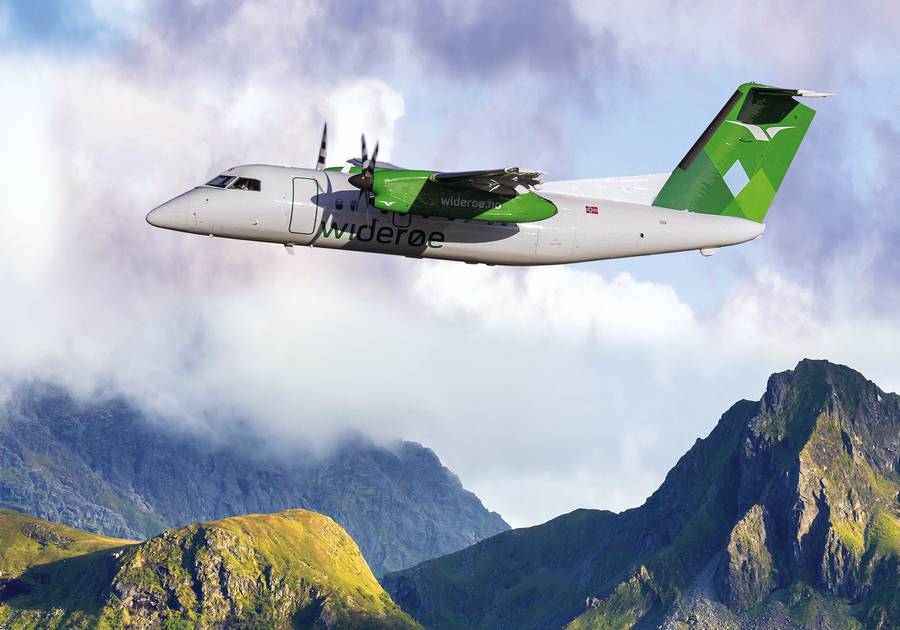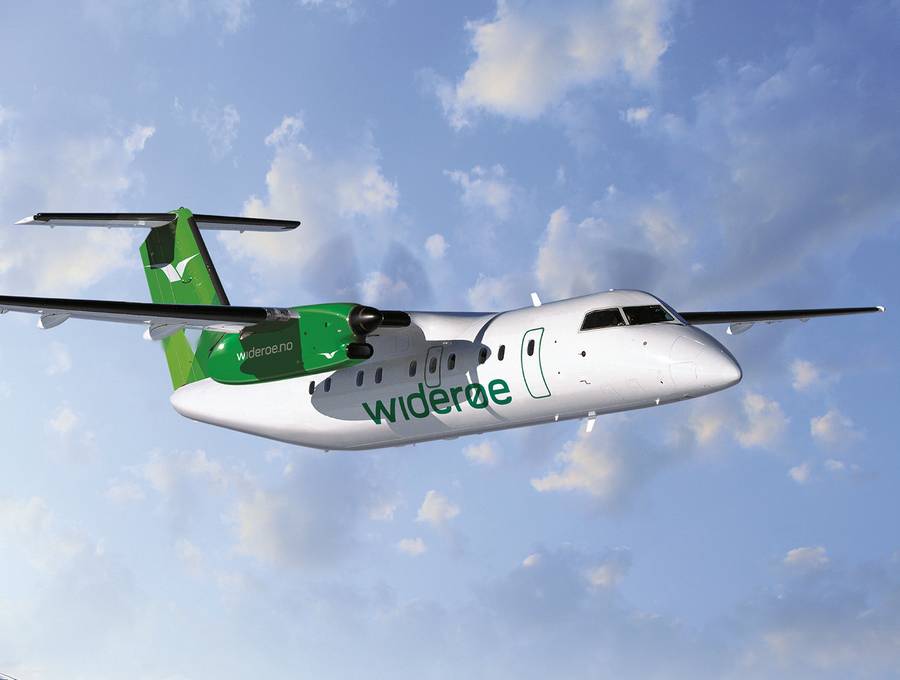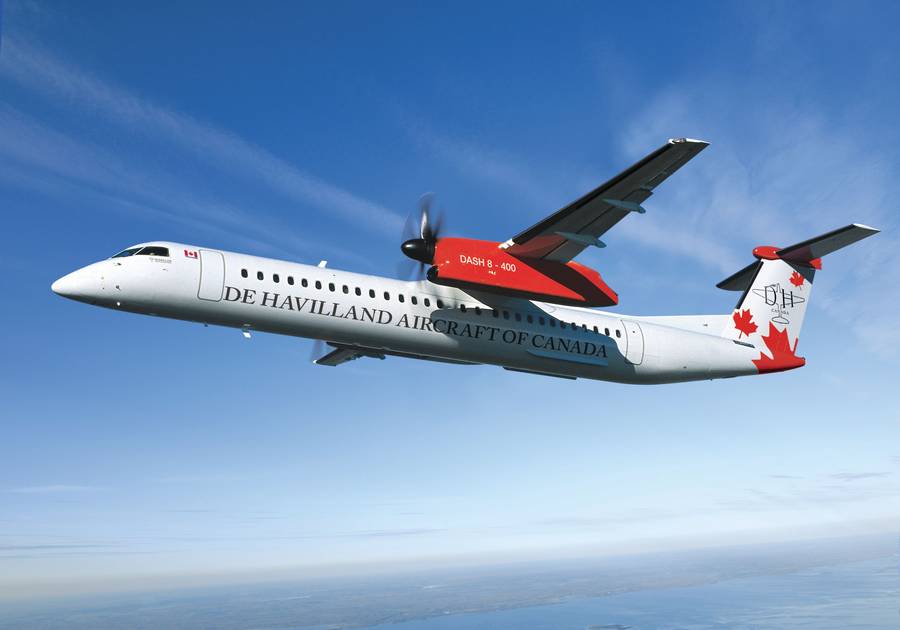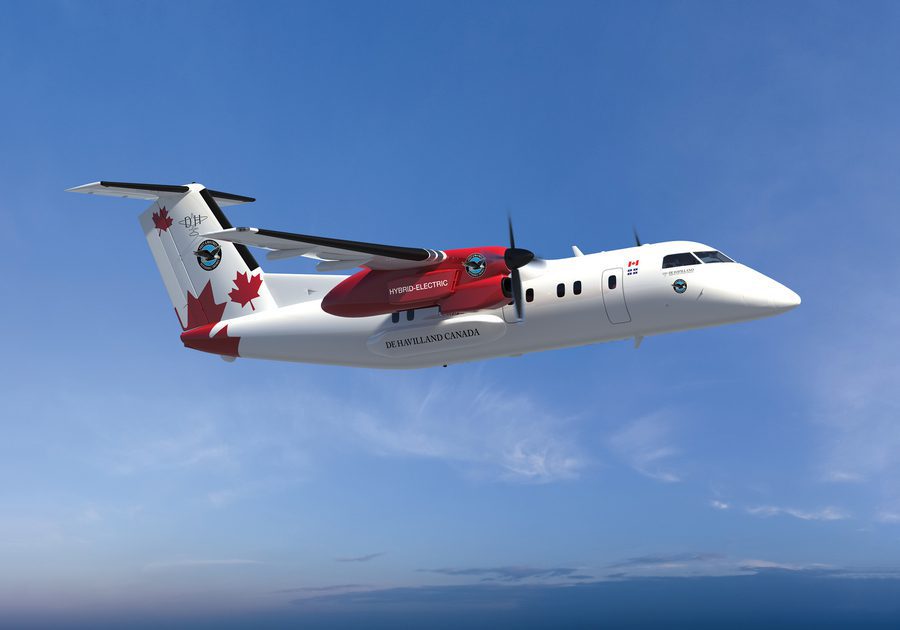De Havilland Canada is offering a second life extension program for the Dash 8-100, its smallest turboprop. Why would airlines want this?
De Havilland Canada has bought the rights to the Dash 8 family from Bombardier. The fate of the Dash 8-400 (Q400), the newest, largest member of this turboprop family, is still uncertain. The company would need to invest in restarting the production of the plane. And this seems difficult because the availability of stored used examples is seriously limiting the demand for new planes.

Extended Service Program PLUS
But curiously perhaps, some airlines really like their existing, older planes. Last week, De Havilland announced that it has a launch customer for its Extended Service Program PLUS (ESP PLUS). This program involves the Dash 8-100. Widerøe, a Norwegian regional carrier, signed on to incorporate ESP PLUS on ten planes in its fleet. The airline also has options to incorporate the program on ten more aircraft.
The purpose of ESP PLUS is to increase the service life of these planes to 160,000 cycles. A cycle is a take-off and a landing. Originally, this model had a service life of 80,000 hours. The first Extended Service Program increased this to 120,000 hours. So the ESP PLUS is an additional step, practically doubling the original life of the Dash 8-100 fleet.

What makes this noteworthy, is the age of these turboprops. On average, Widerøe’s Dash 8-100s are about 27 and a half years old – with a fairly narrow spread. Only one of them is just under 20 years old. Another is 22 and a half, with the rest of them being 25 and over. Some are over 30! We sometimes see airlines investing heavily on freighters that have over twenty years on their wings. But why would Widerøe invest in such a program for small turboprops?
Dash 8-100: A Rare “Mid-Size” Turboprop
What makes the Dash 8-100 worthy of such care and attention, is its niche: size. As aircraft sizes go, airlines have a variety of choices for 19-seaters. This is a key number because planes with 20 or more passengers require a cabin crew member. Going bigger, there are some choices for planes with 45-50 seats.

But as Leeham News points out, there are really no choices out there for an aircraft with around 30 seats. Apart from the Dash 8-100, that is. Obviously, demand for such an aircraft isn’t very strong. Airlines could eventually see a new design, perhaps incorporating an interesting means of propulsion. But such designs (or even conversions) aren’t around the corner. Astonishingly, Widerøe’s 27-year-old planes may well stay in service for another 27 years, or more!
According to de Havilland, the ESP PLUS could add another 30 to 40 years to the life of the Dash 8-100. The ESP and ESP PLUS programs exist thanks to the larger turboprops in the family. Service improvements on the bigger, heavier Q400 are enabling such life extension programs for the smaller models. De Havilland also offers the ESP (not PLUS) for the intermediate Dash 8-300.

Finally, as the smallest variant of a bigger turboprop family, the Dash 8-100 is also a good systems testbed. As we have seen previously, de Havilland and Pratt & Whitney Canada will use such a plane for their testing of a Hybrid-electric propulsion conversion. This program includes investment from the governments of Canada and Quebec. Widerøe is its own electric propulsion project, with a smaller aircraft.




2 comments
[email protected]
I think they are doing well because it is better to use old airplanes than buying new that never pay of because of the environmentalists will not allow them to fly until 2050
Also the world war 3 might put an end to civil aviation.
scott bywater
Would this change up inspections like the c check because of its age? And what about emissions that all the other airlines are having to deal with? Curious is all. Personally speaking I’d be pretty nervous to fly aboard one of these aircraft with 160k cycles on the airframe, or do they only plan to use these q-100’s for freighter purposes?